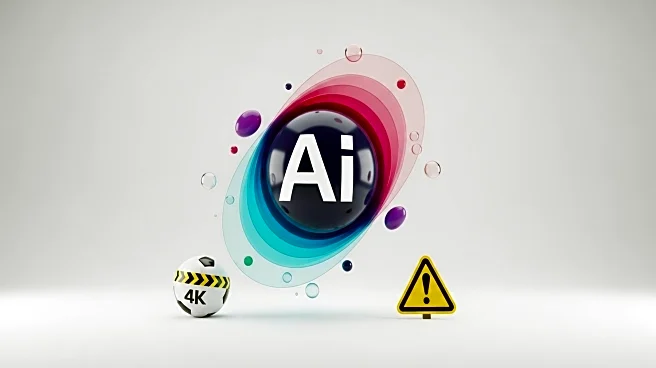What's Happening?
In the current B2B landscape, attention has emerged as the most valuable currency for brands. Traditional marketing strategies focused on demand capture are no longer sufficient due to the oversaturated digital ecosystem. Decision-makers are overwhelmed with content, leading to less engagement with brands and a reliance on peer validation. The shift requires B2B CMOs to reframe their approach from capturing demand to commanding attention. This involves prioritizing mental availability over lead acquisition and integrating brand and demand strategies to create connected journeys that inform, inspire, and convert. The use of AI in marketing is prevalent, but it should be used to amplify human creativity rather than replace it.
Why It's Important?
The shift towards attention command is crucial for B2B brands to thrive in a competitive environment. As economic headwinds slow deal velocity and increase scrutiny over spending, capturing intent alone is insufficient. Brands must create demand by building their brand and earning attention early and consistently. This approach not only enhances awareness and trust but also improves conversion effectiveness. The integration of AI tools in marketing can accelerate content production, but it risks creating generic and undifferentiated content. Therefore, blending AI-driven scale with human creativity is essential to maintain differentiation, authority, and trust. Brands that successfully command attention will gain a competitive advantage and drive growth.
What's Next?
B2B CMOs are encouraged to adopt several strategies to stay ahead in the evolving landscape. These include prioritizing share of attention over share of voice, integrating brand and demand strategies, and embracing AI with guardrails to protect brand values and customer trust. Additionally, focusing on customer growth by turning retention into revenue and designing experiences that convert customers into advocates is recommended. CMOs are urged to be bold and challenge the category to leave a lasting impression on their audience and competitors. The emphasis is on creative courage and brand distinctiveness to ensure market leadership and avoid the risk of becoming irrelevant.
Beyond the Headlines
The deeper implications of this shift highlight the importance of emotional intelligence and creative bravery in marketing strategies. As new customer acquisition becomes costlier, brands must leverage their existing audiences to drive growth. The integration of AI in marketing presents ethical considerations regarding content authenticity and originality. Brands must navigate these challenges to maintain trust and credibility. The focus on attention command reflects a broader trend towards personalized and human-centric marketing approaches that resonate with audiences on an emotional level. This shift may lead to long-term changes in how B2B brands engage with their customers and differentiate themselves in the market.











